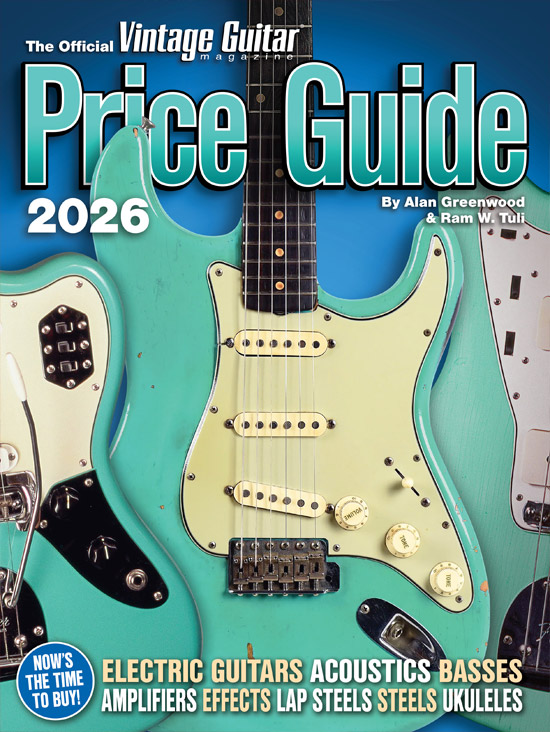
They might not seem to have a ton in common aside from first names. J Mascis, Dinosaur Jr.’s co-founder and guitarist developed a style equal parts guitar heroics and left-side-of-the-dial insouciance. In Uncle Tupelo, Jay Farrar helped popularize the alt-country movement by merging influences from Doug Sahm to The Stooges.
But that might be where the divergence ends and the convergence begins, as both are behind some of the most-influential indie albums of the late 20th century. Both also continue to tour and release music (Farrar with Son Volt). The two even shared producers back in the day.
That’s where Sean Slade and a certain SG Junior offer another common thread.
Now an associate professor at Berklee College of Music, Slade and business partner Paul Kolderie were proprietors of Boston’s Fort Apache studio. Their credits included records by The Pixies, Radiohead, Hole, and Warren Zevon, among many others. Slade and Kolderie were also in the control room when Dinosaur Jr. and Uncle Tupelo laid down Bug (1988) and No Depression (1990), respectively. Today, those albums are pillars of indie rock – and Slade’s SG Junior featured on both.
Mascis encountered the guitar when Dinosaur Jr. entered Fort Apache to record Bug in ’88.
“I’m pretty sure it was sitting on a stand,” Slade recalls. “The other one I owned at that time was a ’56 TV model with a single cutaway. [Mascis] gravitated toward the SG Junior. He plugged it in and started to play, and that’s where the name came from, because he turned around and he handed it back to me and goes, ‘That guitar plays instant rock.’”
Thus dubbed by the notoriously taciturn Mascis, the guitar appeared on Bug, though its role has been overstated.
“It was only for a song or two,” Slade says, noting that Mascis still favored his iconic Jazzmasters. “So, all that has been somewhat inflated or exaggerated over the years. He might have used it as an overdub guitar in ‘Freak Scene,’ but it’s not the main guitar.”
Equally apocryphal are certain accounts of how Uncle Tupelo came to work with Slade and Kolderie – and with Instant Rock. Slade pushes back on the notion that Uncle Tupelo (which sometimes covered “Freak Scene” in its live sets) journeyed to the mean streets of Boston from their home in southern Illinois because they were so taken with Bug.

“I know that they were interested in working with us because of the Dinosaur Jr. thing, but it never was explicit,” Slade begins before addressing the role of Instant Rock. “We had this guitar and we knew it sounded great. And the idea was ‘Oh, this would sound really good for the loud guitar parts.’”
Not to say Farrar didn’t find an affinity for Instant Rock. Quoted in Greg Kot’s 2004 biography of Wilco (the post-Uncle Tupelo band formed by Farrar’s former bandmate, Jeff Tweedy), Wilco: Learning How to Die, Slade said when Farrar “…had that guitar in his hands, there was a recklessness and looseness there that you never could have imagined.”
As for how Slade came to own the instrument, it was a photo of his guitar hero, Chris Spedding, with an SG Junior that convinced him it was the axe for him.
“I bought it at Cambridge Music,” he remembers. “It was on display in back of the counter, and I stood there for five minutes, being completely ignored by the clerks. I looked uncool or something.”
Eventually, Slade convinced staff to take his $325 and the Junior went on to serve in his band, The Sex Execs, before semi-retirement at Fort Apache. As a gigging instrument, the Junior suffered the indignity of having a chunk of its mahogany body broken off around the output jack. Jim Mouradian, a guitar tech working out of Cambridge Music, came to the rescue.
“He took a piece of wood and very artfully placed it in there and then replicated the color as best he could,” Slade explains.
Mouradian also replaced the stock stop-tail with an adjustable bridge. Aside from solving the guitar’s intonation problems, Slade is convinced the brass saddles contribute to its tone. Other than that, the Junior is the same as when Slade bought it, down to the original tuners and P-90, whose overtones Slade describes as “magical.”
Noting, too, the guitar’s long-missing Volume knob, he distills Instant Rock’s magic: “It hasn’t been there for years, but there’s no reason to have it because all you got to do is turn it up all the way anyway.”
This article originally appeared in VG’s February 2024 issue. All copyrights are by the author and Vintage Guitar magazine. Unauthorized replication or use is strictly prohibited.



